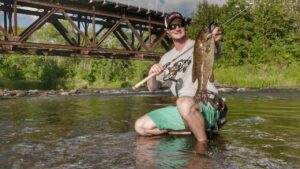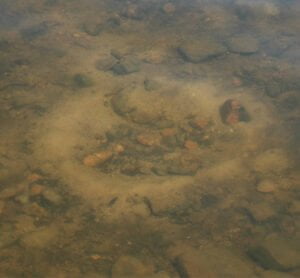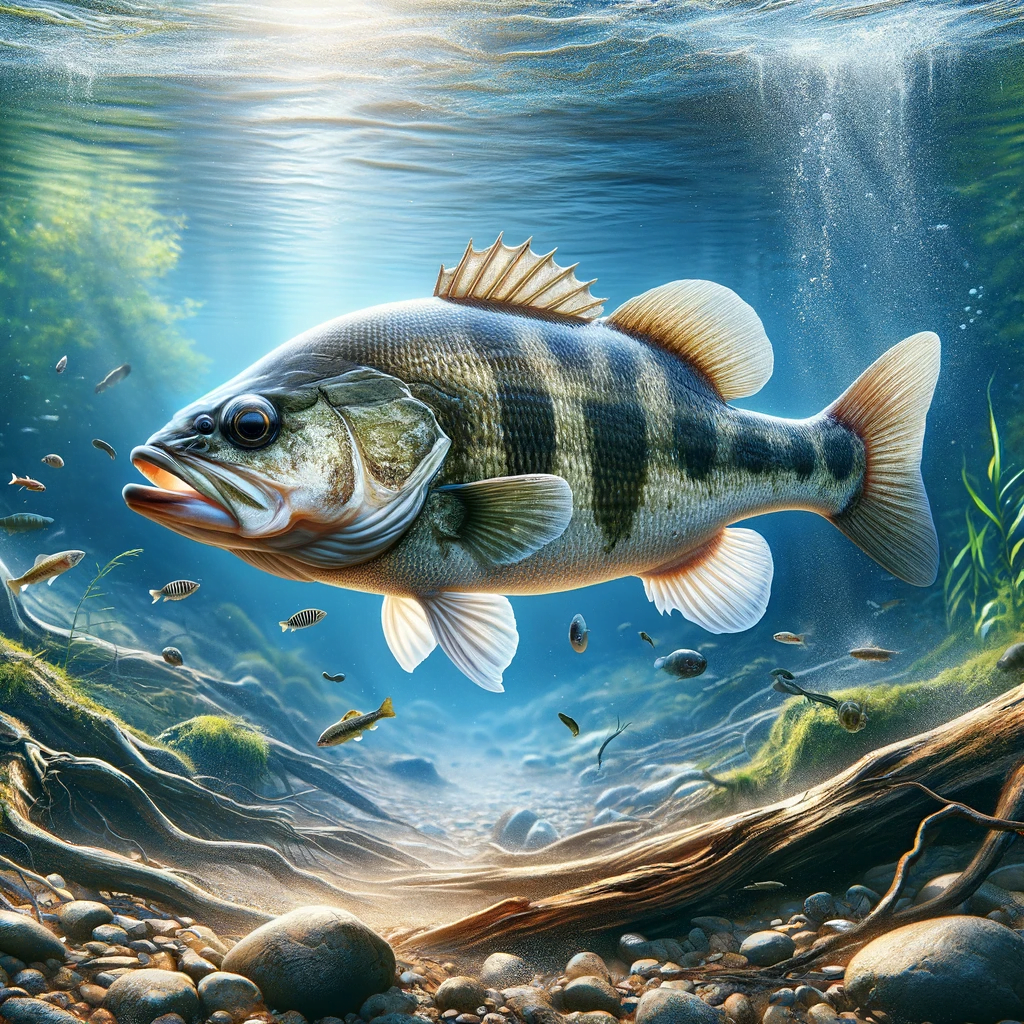
Have you ever wondered if smallmouth bass bite all day long? Well, the answer to that question is not as straightforward as you might think. Smallmouth bass are known to be voracious predators, but their feeding activity can vary depending on various factors such as water temperature, weather conditions, and time of day. In this article, we will delve into the fascinating world of smallmouth bass feeding habits and shed light on whether they truly bite all day or not.
Smallmouth bass are typically most active during the early morning and late evening hours, when water temperatures are cooler and prey is more active. During these periods, smallmouth bass tend to feed more aggressively, making it easier for anglers to catch them. However, this is not to say that smallmouth bass don’t bite at other times of the day. In fact, they can still be caught throughout the day, but their feeding activity may vary.
Understanding the feeding patterns of smallmouth bass can greatly enhance your chances of a successful fishing trip. By paying attention to factors such as water temperature, weather conditions, and time of day, you can determine the best times to target these elusive fish. In the next paragraphs, we will delve deeper into the specifics of smallmouth bass feeding habits, providing you with valuable insights and tips to improve your angling skills. So, if you’re ready to learn more about when and how smallmouth bass bite, keep reading!
Smallmouth bass behavior
Smallmouth bass, also known as Micropterus dolomieu, are a popular species of fish among anglers. They are well-known for their strong fight and aggressive behavior, making them a sought-after catch. Understanding the feeding patterns and activity of smallmouth bass can greatly enhance your chances of success on the water. In this article, we will explore whether smallmouth bite all day, factors influencing their feeding behavior, and effective strategies for targeting them during different times of the day.
Feeding patterns of smallmouth bass
Smallmouth bass are opportunistic predators, meaning they will feed on a wide variety of prey. Their diet primarily consists of small fish, crayfish, insects, and crustaceans. They are most active during warmer months, as their metabolism increases with higher water temperatures. This increased metabolic rate leads to more frequent feeding patterns throughout the day.
Smallmouth bass prefer areas with clear, rocky bottoms, where their preferred prey is often found. They are also known to seek shelter near submerged structures, such as vegetation, rocks, or fallen trees, which provide both protection and ambush points for feeding.
Factors influencing smallmouth bass feeding
While smallmouth bass can bite throughout the day, their activity levels and feeding behavior can be influenced by various factors. One crucial factor is water temperature. Smallmouth bass tend to be more active and aggressive in warmer water, typically between 60 and 75 degrees Fahrenheit. As the water temperature drops below or rises above this range, their metabolism slows down, making them less active and decreasing their propensity to feed.
Another factor that plays a significant role in smallmouth bass feeding is the availability of their preferred prey. During certain times of the day, small fish, crayfish, or insects might be more active, making it an opportune time for smallmouth bass to feed. Understanding the behavior and presence of their prey can help you predict when smallmouth bass are most likely to bite.
Smallmouth bass activity during different times of the day
Do smallmouth bite all day? The answer to this question depends on the time of day and other environmental factors. Smallmouth bass typically exhibit different feeding patterns and activity levels throughout the day. By understanding these patterns and adapting your fishing strategies, you can increase your chances of success on the water.
Morning feeding frenzy
Best time to catch smallmouth in the morning
The morning hours just after sunrise are often considered the prime time for smallmouth bass fishing. As the sun rises, it gradually warms up the water, which stimulates smallmouth bass activity and feeding. This is when smallmouth bass tend to be most active, providing an excellent opportunity to hook into some feisty fish.
Preferred baits for morning bites
When targeting smallmouth bass in the morning, it’s essential to use baits and lures that mimic their preferred prey. Topwater lures, such as poppers, buzzbaits, or frogs, can be highly effective during this time. These lures create surface disturbance and imitate injured or struggling prey, triggering smallmouth bass to strike.
Additionally, soft plastic baits, like jerkbaits, swimbaits, or crayfish imitations, can also be successful. These baits can be fished at various depths, allowing you to target smallmouth bass at their preferred levels.
Techniques for targeting smallmouth in the morning
To maximize your chances of success during the morning feeding frenzy, consider casting your bait near areas with ample cover, such as fallen trees, submerged rocks, or weed beds. Smallmouth bass often use these structures as ambush points to prey on unsuspecting prey.
Retrieve your bait with varied speeds, incorporating pauses and twitches to imitate the erratic movements of injured prey. This can entice smallmouth bass to strike out of instinctual aggression.
Midday lull
Reasons for decreased activity midday
As the day progresses and the sun reaches its peak, smallmouth bass activity levels tend to decrease. The combination of increased sunlight and higher water temperatures can cause smallmouth bass to seek cooler, shaded areas or deeper water to conserve energy. This midday lull can make catching smallmouth bass more challenging.
Tips for finding active smallmouth during midday
To locate active smallmouth bass during the midday lull, focus your efforts on deeper water or shaded areas. Smallmouth bass often retreat to these areas to avoid the direct sunlight and cooler water temperatures. Look for deeper holes, submerged ledges, or undercut banks where smallmouth bass may be seeking shelter.
It’s also worth noting that smallmouth bass can be more active during overcast or windy conditions, as these conditions offer more favorable environmental conditions. Keep an eye on weather patterns and adjust your fishing strategies accordingly.
Effective midday fishing tactics
When fishing for smallmouth bass during the midday lull, it’s important to adjust your techniques to entice strikes. Consider using finesse tactics, such as drop-shot rigs or Carolina rigs, which allow you to present your bait at different depths and keep it in the strike zone for longer periods.
Focus on slow and subtle presentations to imitate the more lethargic movements of prey in warmer water. Soft plastics, such as worms, flukes, or tubes, can be effective in triggering strikes during this time.
Afternoon resurgence
Factors contributing to increased smallmouth activity in the afternoon
As the afternoon progresses and the sun starts descending, smallmouth bass activity levels tend to rise again. The combination of decreasing sunlight and cooler water temperatures stimulates smallmouth bass to become more active and resume feeding.
Go-to lures for afternoon smallmouth bites
When targeting smallmouth bass in the afternoon, crankbaits, spinnerbaits, and jigs are often effective choices. Crankbaits can imitate injured fish or crayfish, while spinnerbaits provide flash and vibration to attract smallmouth bass from a distance.
Strategies for maximizing afternoon fishing success
To maximize your success in the afternoon, focus on areas where smallmouth bass are likely to be actively feeding. Points, drop-offs, and submerged structures are all prime locations where smallmouth bass tend to gather during this time.
Vary your retrieval speed and experiment with different colors and sizes of lures to determine what smallmouth bass are responding to on that particular day. It’s crucial to pay attention to any signs of active feeding, such as surface disturbances or baitfish activity, as it can indicate the presence of hungry smallmouth bass nearby.
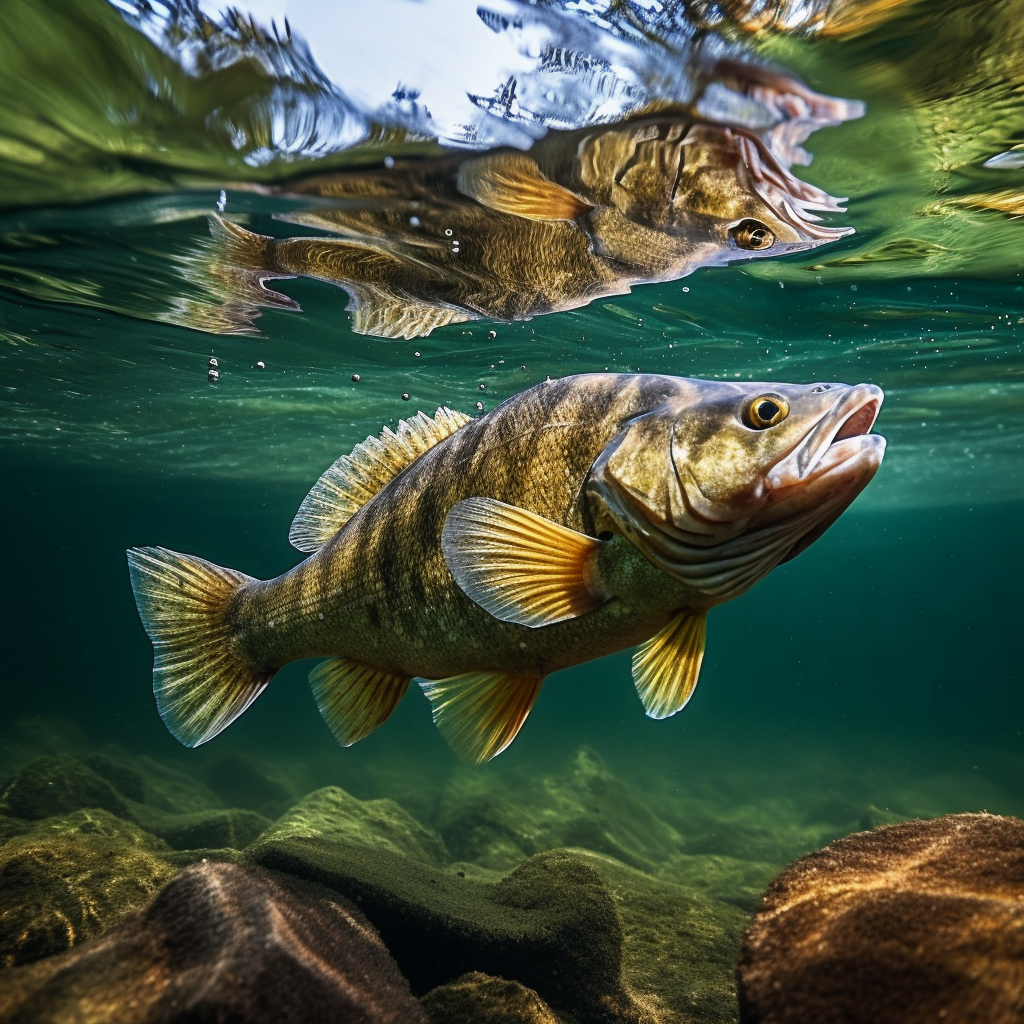
Evening action
Why smallmouth fishing can be productive in the evenings
Evenings can offer some of the most productive smallmouth bass fishing opportunities. As the sun sets, the water starts to cool down, and smallmouth bass become more active. They venture out from their hiding spots and aggressively feed before nightfall.
Top evening fishing spots for smallmouths
When targeting smallmouth bass in the evenings, focus on areas where they might be staging for their evening feeding spree. Look for shallow flats adjacent to deeper water, as smallmouth bass often patrol these areas in search of prey. Additionally, rocky shorelines, submerged structures, or points can also hold active smallmouth bass during this time.
Nighttime baits and techniques for catching smallmouth
During nighttime fishing for smallmouth bass, using lures with rattles or creating noise and vibration can be effective. Spinnerbaits, crankbaits, or topwater lures, such as buzzbaits or frogs, can all generate strikes in low-light conditions. It’s essential to rely on your sense of touch and listen for any subtle indications of bites, as visibility is limited during the night.
Weather-related considerations
How weather conditions affect smallmouth feeding behavior
Weather conditions play a significant role in smallmouth bass feeding behavior. Changes in atmospheric pressure, temperature, wind, and cloud cover can all influence their activity levels and feeding patterns. Understanding how these factors impact smallmouth bass behavior can help you tailor your fishing tactics accordingly.
Adjusting tactics for different weather patterns
During stable weather conditions, smallmouth bass tend to be more predictable and adhere to their usual feeding patterns. In contrast, changing weather conditions, such as approaching storms or significant temperature drops, can trigger smallmouth bass into a more aggressive feeding spree.
During periods of unstable weather, consider using faster and louder lures that can attract smallmouth bass from a distance. Experiment with different colors and sizes to determine what triggers the most strikes.
Tips for fishing smallmouth in adverse weather conditions
Adverse weather conditions, such as heavy rain, strong winds, or extreme temperatures, can pose challenges for smallmouth bass fishing. However, these conditions can also present unique fishing opportunities for the persistent angler.
During heavy rain, smallmouth bass may become more active, as the rainfall triggers an increase in aquatic insect activity. Use lures that imitate insects, such as soft plastic creatures or spinnerbaits with small blades.
On windy days, smallmouth bass tend to use windward shorelines as feeding lanes, as baitfish and other prey can get pushed towards them. Position yourself accordingly and focus your efforts on areas where the wind is blowing towards the shoreline.
In extreme temperatures, such as during a heatwave, smallmouth bass may seek deeper, cooler water. Target submerged structures or areas with access to deeper water, as smallmouth bass are more likely to be actively feeding in these locations.
Location and structure
Preferred habitats and structures for smallmouth bass
Smallmouth bass favor areas with clear, rocky bottoms, where their preferred prey is often found. Look for rocky points, shorelines with boulders or submerged rock piles, and areas with gravel or rocky substrate. These areas provide smallmouth bass with the ideal hunting grounds and ambush points.
Identifying key areas where smallmouth tend to bite all day
While smallmouth bass exhibit different feeding patterns throughout the day, there are specific areas where they are more likely to bite consistently. Transition areas, such as drop-offs, ledges, or points, are prime locations to target smallmouth bass during all times of the day. These areas often provide a mix of shallow and deep water, which smallmouth bass utilize for hunting and resting.
Using topographical maps and fish finders to locate smallmouth
To maximize your success in locating smallmouth bass, consider using topographical maps and fish finders. Topographical maps can help you identify potential hotspots, such as points or drop-offs, before even stepping foot on the water. Fish finders, on the other hand, can provide real-time information on underwater structures, as well as the presence of baitfish or smallmouth bass. Utilizing these tools can greatly enhance your ability to locate productive areas.
Bait selection and presentation
Choosing the right bait for smallmouth in various conditions
Choosing the right bait is crucial for enticing smallmouth bass in various conditions. As mentioned earlier, it’s important to match the bait with their preferred prey. Soft plastic baits, such as worms, flukes, or tubes, are versatile options that can imitate a variety of prey.
Additionally, crankbaits, spinnerbaits, and topwater lures can all be effective choices, depending on the conditions and smallmouth bass feeding behavior. Experiment with different colors, sizes, and retrieval speeds to determine what triggers the most bites.
Techniques for presenting baits to maximize bites
To maximize your chances of hooking into a smallmouth bass, it’s crucial to present your bait in a natural and enticing manner. Finesse presentations, such as drop-shot rigs, Carolina rigs, or wacky rigs, are often successful in triggering strikes. These techniques allow you to keep your bait in the strike zone for longer periods, increasing the likelihood of enticing a bite.
When retrieving your bait, vary the speed and incorporate pauses or twitches to imitate the erratic movements of injured or struggling prey. Smallmouth bass are instinctually triggered by these actions and are more likely to strike.
Common mistakes to avoid when fishing for smallmouth
When targeting smallmouth bass, it’s important to avoid some common mistakes that can decrease your chances of success. One mistake is using lures or baits that do not resemble the smallmouth bass’s preferred prey. Matching the hatch, or imitating the prevalent forage at the time, is crucial for enticing strikes.
Another mistake is not paying attention to the details of your presentation. Smallmouth bass are often finicky and can quickly lose interest in poorly presented baits. Take the time to adjust your techniques, retrieve speeds, and bait color or size to match the conditions and smallmouth bass feeding behavior.
Tips from experienced anglers
Insights and advice from seasoned smallmouth bass fishermen
Experienced anglers have invaluable insights and advice when it comes to targeting smallmouth bass throughout the day. Here are a few tips from those who have honed their skills over the years:
Observe and adapt: Pay attention to the behavior of smallmouth bass and their preferred prey. By observing the water and adjusting your tactics accordingly, you can increase your chances of success.
Fish the edges: When targeting smallmouth bass during the day, focus on fishing the edges of structure or transition areas. Smallmouth bass often use these areas as ambush points to prey on passing baitfish.
Downsize your baits: In clear water or when smallmouth bass are being finicky, consider downsizing your baits to imitate more natural prey. This can increase your chances of enticing a bite.
Practice catch and release: Smallmouth bass are a valuable resource, and practicing catch and release can help ensure their populations remain healthy for future generations of anglers.
Proven strategies for consistent success
Consistency in fishing for smallmouth bass comes from a combination of knowledge, experience, and adaptability. Experiment with different techniques, baits, and locations to determine what works best for you in different conditions. Keep a logbook to track what has been successful in the past, as this can serve as a valuable reference for future fishing trips.
Lessons learned from years of targeting smallmouth
Targeting smallmouth bass is a continual learning process. Whether you are a seasoned angler or new to the sport, there are always opportunities to learn and improve. Pay attention to the subtle nuances of smallmouth bass behavior, explore new techniques, and be open to trying different approaches on the water. Over time, these lessons and experiences will contribute to consistent success.
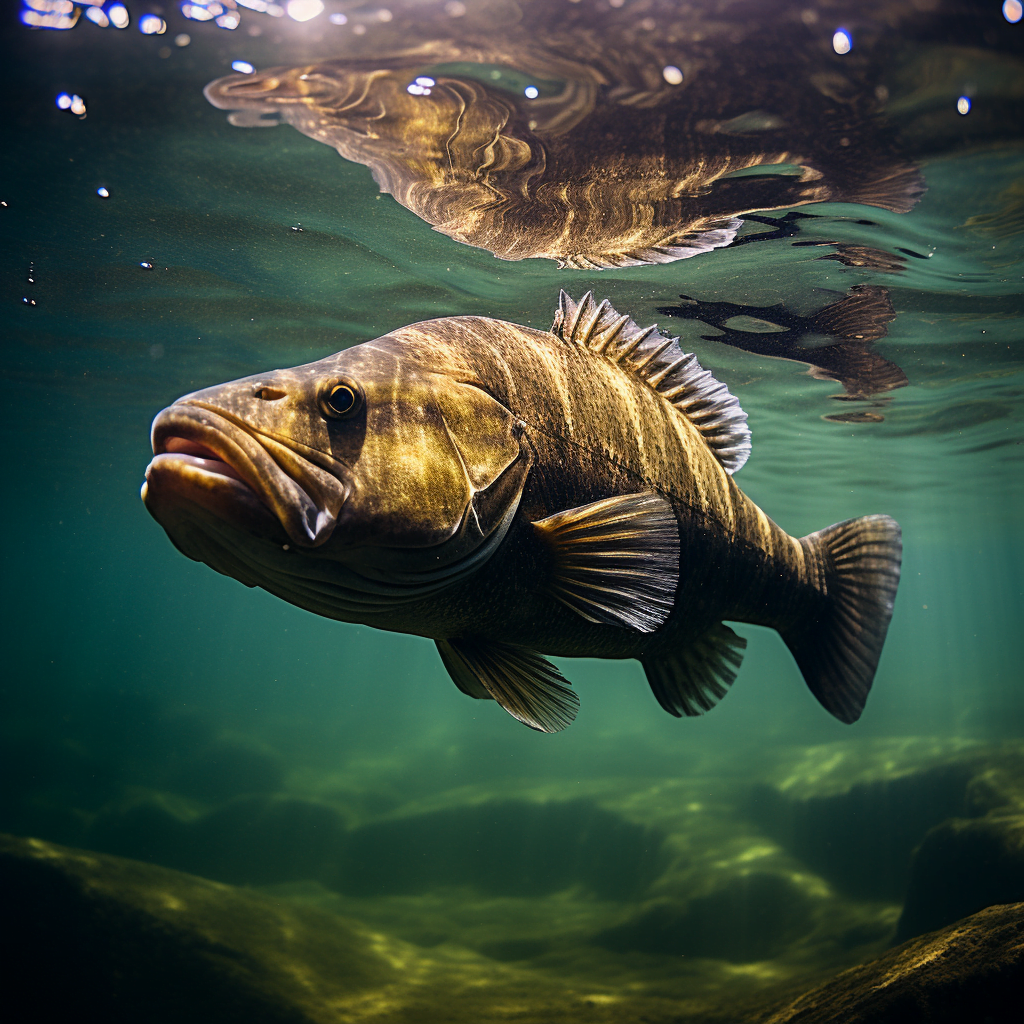
Conclusion
Do smallmouth bite all day? While smallmouth bass can be caught throughout the day, their feeding behavior and activity levels are influenced by various factors. Understanding their feeding patterns, preferred prey, and how environmental conditions impact their behavior can greatly enhance your chances of success on the water.
By adapting your fishing strategies based on the time of day and weather conditions, you can maximize your chances of hooking into some feisty smallmouth bass. Remember to be observant, patient, and willing to adjust your techniques and presentations to match the conditions.
In the end, fishing for smallmouth bass is a journey of continual learning and experimentation. Each trip provides an opportunity to expand your knowledge and refine your skills. Enjoy the process, cherish the experiences, and relish the excitement that comes with hooking into these formidable fish.


